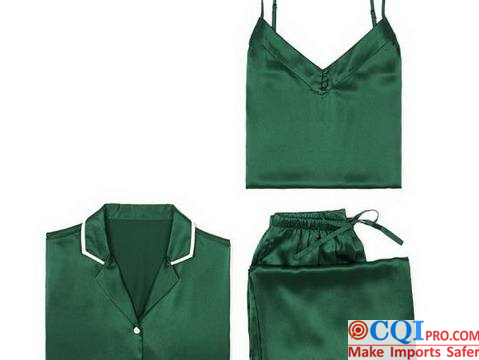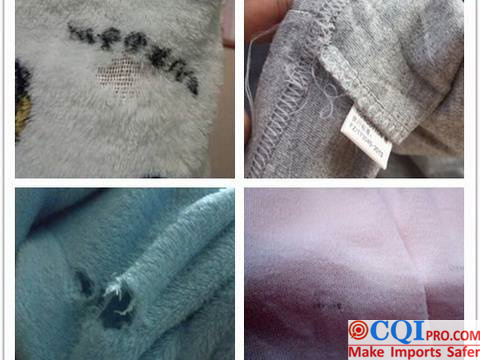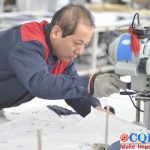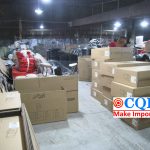Pajamas Inspection,How To Perform?
Pajamas are actually a kind of casual clothes that are worn indoors before and after going to bed, including pajamas, pajamas pants, nightgowns, and nightdresses. Most of the materials are made of absorbent cotton, silk , soft and comfortable fabrics. In the pajamas inspection, the comfort of the fabric is verified to ensure that the manufacturer does not use other fabrics, and at the same time avoid superficial inspection.
Pajamas Inspection 1: The Main Structure
Pajamas usually refer to comfortable garments made of pure cotton, knit, silk and flannel. It is generally composed of fabrics, linings and accessories. The accessories include stitching, buttons, zippers and embroidery.
Pajamas Inspection 2: The Manufacturing Process Of Pajamas
Complete process: fabric preparation – singeing – printing – confirm the size of the color and accessories – cutting – sewing – quality inspection – ironing – clean & packaging
Among the important aspects are:
- Singeing process: The purpose of singeing is to make the fabric show its original even better appearance. In the pajamas inspection, every singeing is handled properly and needs to be carefully checked.
- Printing process: This is a common process in garment production and an important step in pajamas inspection. A good print design will make the garment more ornamental. Plus different ways of printing, there are different choices for the fabric of the product, but these prints can not be misplaced or easily faded.
- Sewing process: The stitch pitch density of sewing is generally in accordance with national standards, but if the importer has a special design, the factory will improve the stitch spacing and improve the sewing effect.

The common defects and causes during pajamas inspection
Appearance class :
- It adopts the lining cloth, shoulder pad, decorative lace, bag cloth, etc. which are suitable for the performance of the fabric and lining used;
- Use the sutures, cords, elastic bands, etc., which are suitable for the performance and color of the fabrics and linings used;
- The surface of buttons, decorative buckles, zippers and other accessories should be smooth, burr-free, defect-free, flawless, and the zipper is well meshed and smooth;
- For fabrics, long-haired raw materials must be consistent with the whole body, except for special designs;
- No color difference is allowed between the parts, and no color difference is allowed between the top and bottom;
- The stitched lines of all parts must be straight, tidy and firm, with uniform stitch length and no wrinkles;
- The trademark and durability labels are in a correct position and do not wrinkle;
- All parts are ironed and neat, no hot yellow, water stains and bright light. The bonded parts are not allowed to be degumming, wrinkled, foamed and glued.
Function class :
- The size is not allowed to be biased;
- No odor is allowed;
- Nosharp edges and sharp tips;
- According to relevant standards,the filling material should be made of fiber or its products that meet the requirements.

Product Testing In Pajamas Inspection
Inspector on site test during pajamas inspection
- The above defects are not allowed on the appearance;
- The metal fittings are free from rust and should besafe and firm;
- Abuse test: sewing seam, zipper, button, repeat 20 times, whether damage is found, pay attention to the zipper to must be pulled in one side, check the sewing strength;
- Color fastness test: Checkif the printing onthe surface will fade after the dry rub&wet rub, and if the product will fade or not;
- Needle test: metal needle or broken needle, not allowed to be detected;
- Product size and net weight meet customer requirements;
- The actual function of the product: try on different sizes.
Lab testing
The dimensional change rate of washing, the appearance quality test method after washing, color fastness, tear strength, combustion performance, needle test, etc., should be in line with the National Textile Industry FZ/T 81001-2016.
CQI5 is committed to providing importers worldwide with product quality inspection services that far exceed those of our peers. If you are planning to import or have imported from China or Southeast Asian countries, please contact us cs’@’cqipro.com to learn more about how we can make your imports safer.
This article is an original article for CQI Inspection, who is committed to providing high-quality product inspection technology and know-how sharing for global importers and retailers to make imports safer.
All rights reserved. The contents of this website provided by CQI Inspection may not be reproduced or used without express permission.
For reprint, please contact with CQI Inspection, thank you.





